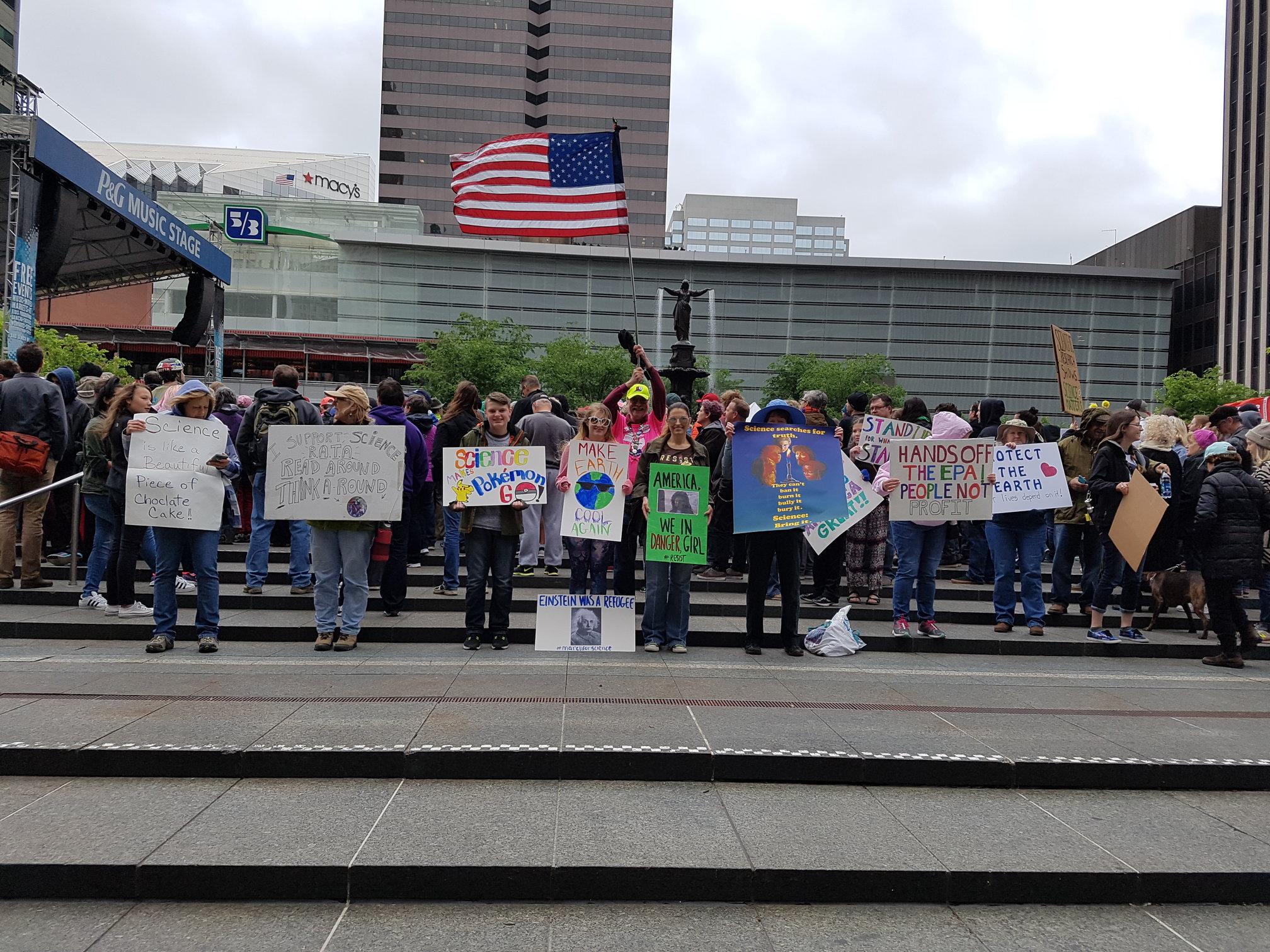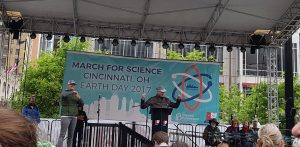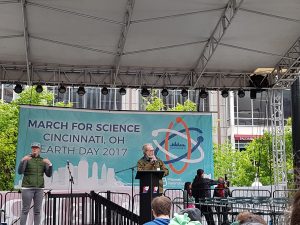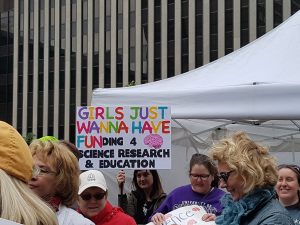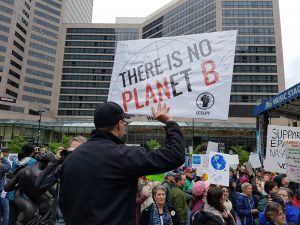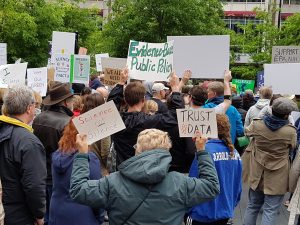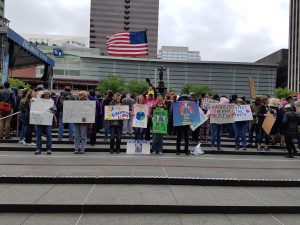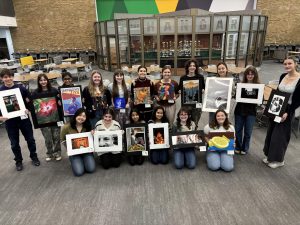Cincinnati marches for science
Jenna Bao, Creative Projects Director
April 24, 2017
-
EDUCATE. Jeffrey Whitsett, Co-Director of Cincinnati Children’s Perinatal Institute, speaks on the impact and power of medical research at the March for Science. “As a training pediatrician, I routinely saw…whooping cough, measles, and hepatitis, meningitis, rubella. But because of immunization, our students have never even seen these once common diseases. Future research shows extraordinary promise to cure those who are still affected by cancer…And many of us at Children’s, across the world, scientists are trying to do just that,” Whitsett said. Cincinnati’s March for Science took place April 22 downtown. The event began in Fountain Square with several speakers including Dean Regas, astronomer for the Cincinnati Observatory, Linda Neenan, founder of iSpace for STEM learning, and Gene Kritsky, Chair of Biology at Mt. Joseph University.
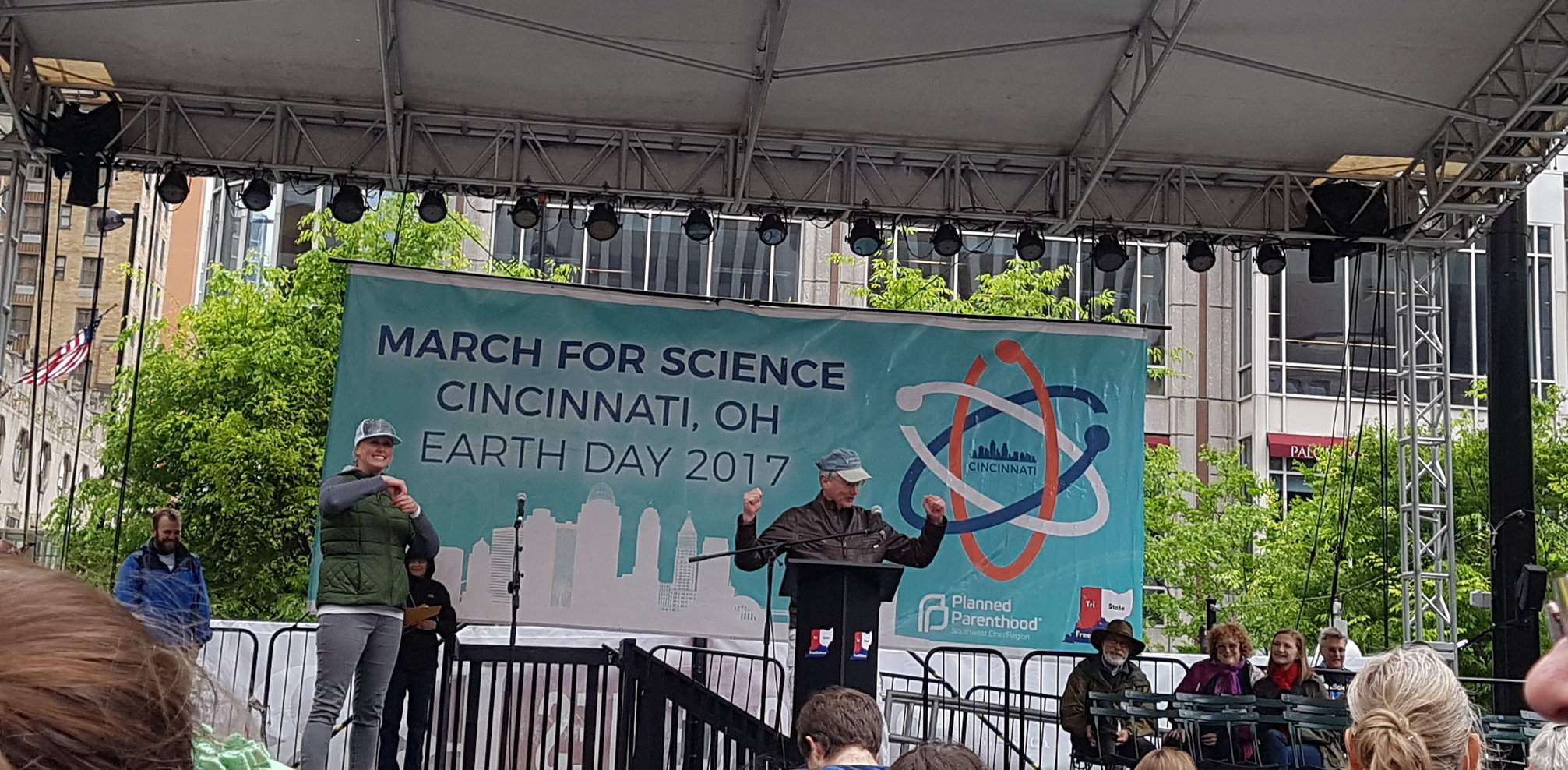
-
CINCINNATI. Kritsky discusses the role that Cincinnati has played in science through American history. “We [in Cincinnati] have been at the forefront … The major figures in the history of science have been influenced by the natural history of Cincinnati. Even Darwin’s Bulldog [Thomas Henry Huxley], the Devil’s Disciple himself came to Cincinnati in 1876…The CIncinnati Enquirer was so astounded he was there that they reported his comings and goings in the local paper. He was welcomed to our city because he was a thinking individual, a scientist…You get relief from seasonal allergies because of a Cincinnati scientist. It was a Cincinnati scientist who first stepped foot on the moon. We march today not just to fight for science, but to fight for Cincinnati science,” Kritsky said.
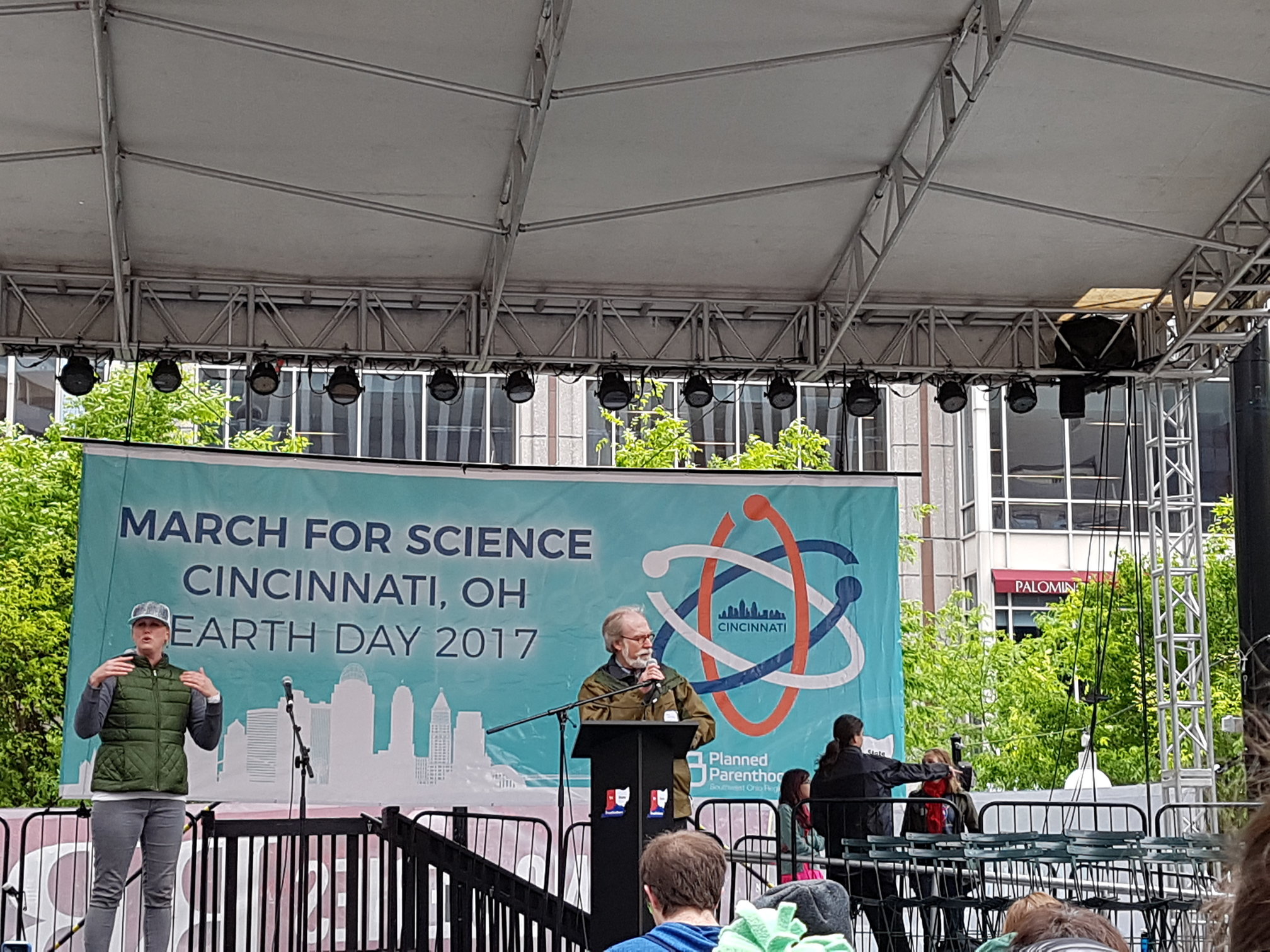
-
SPEAK UP. Marchers call for increased funding and support for research and the scientific community and the use of scientific research in policymaking. The main March for Science was held in Washington D.C. with over 600 satellites marches and rallies in cities all around the world. The march was spurred by concern from recent policies that the scientific community was not being heard. Photo courtesy of Jenna Bao.
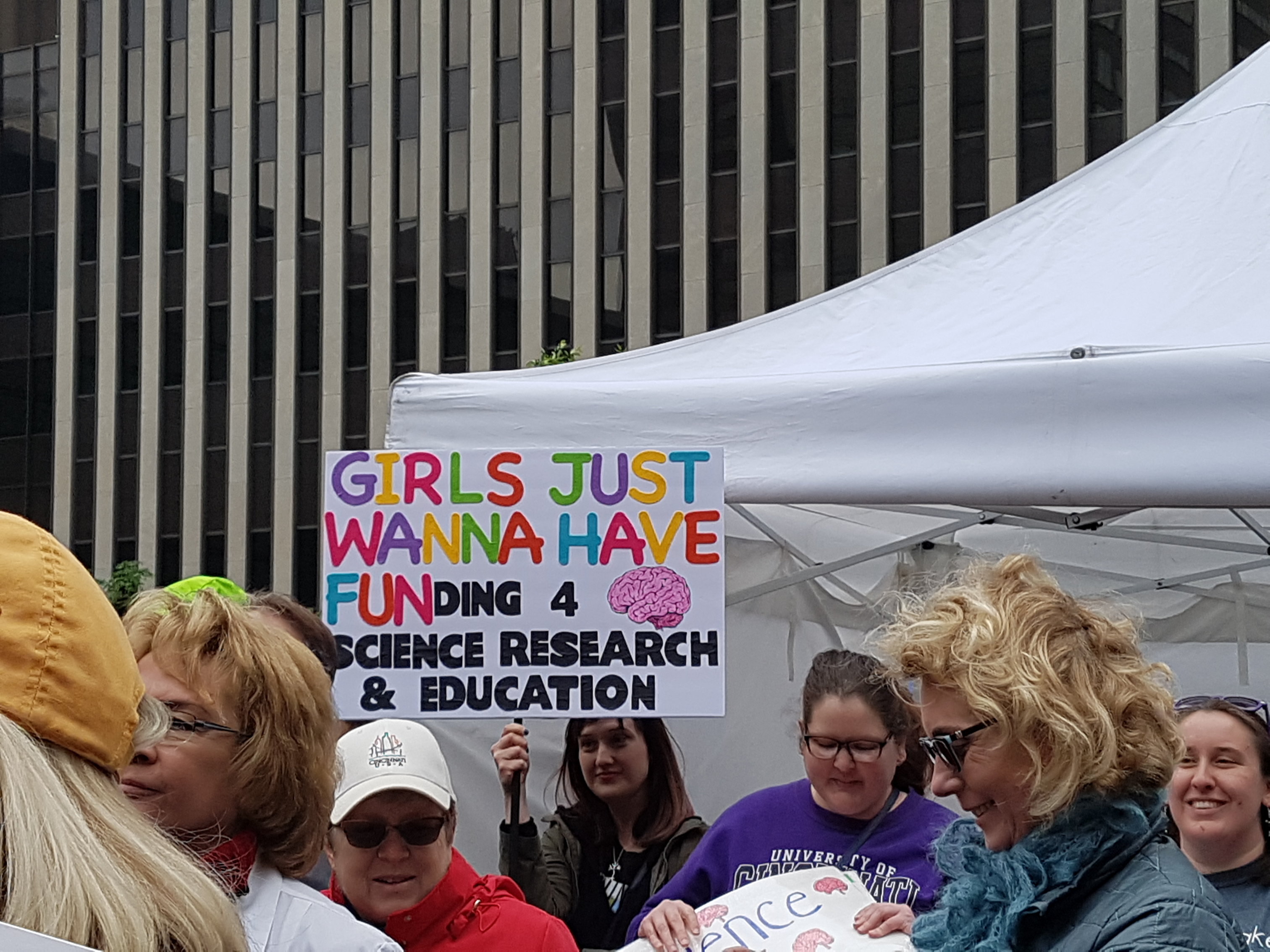
-
HEATING UP. Many protesters express concern regarding climate change. Proposed budget cuts regarding the EPA and the rollback of environmental protection policies have created alarm around the world. Climate change denial is not supported by the scientific community and research yet still has a voice in politics, one of the concerns of participants in the march. Photo courtesy of Jenna Bao.
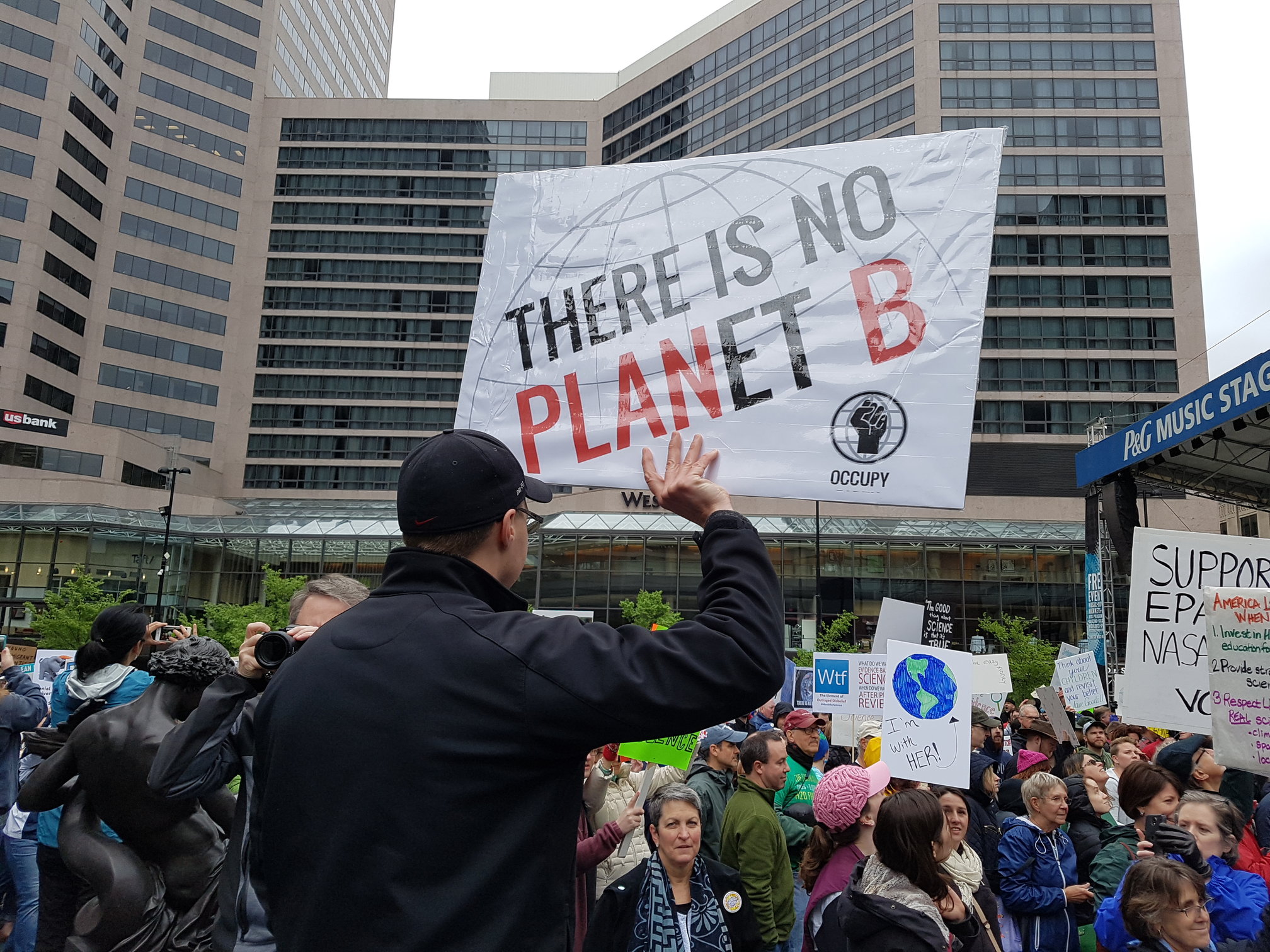
-
MARCH. Marchers walk from Fountain Square to City Hall and back. The movement was intended to be nonpartisan, although many signs and participants did mention disapproval of President Donald Trump. This is largely due to his administration’s gag orders on scientific organizations, proposed cuts to the EPA and NIH, and doubt regarding climate change. Photo courtesy of Jenna Bao.
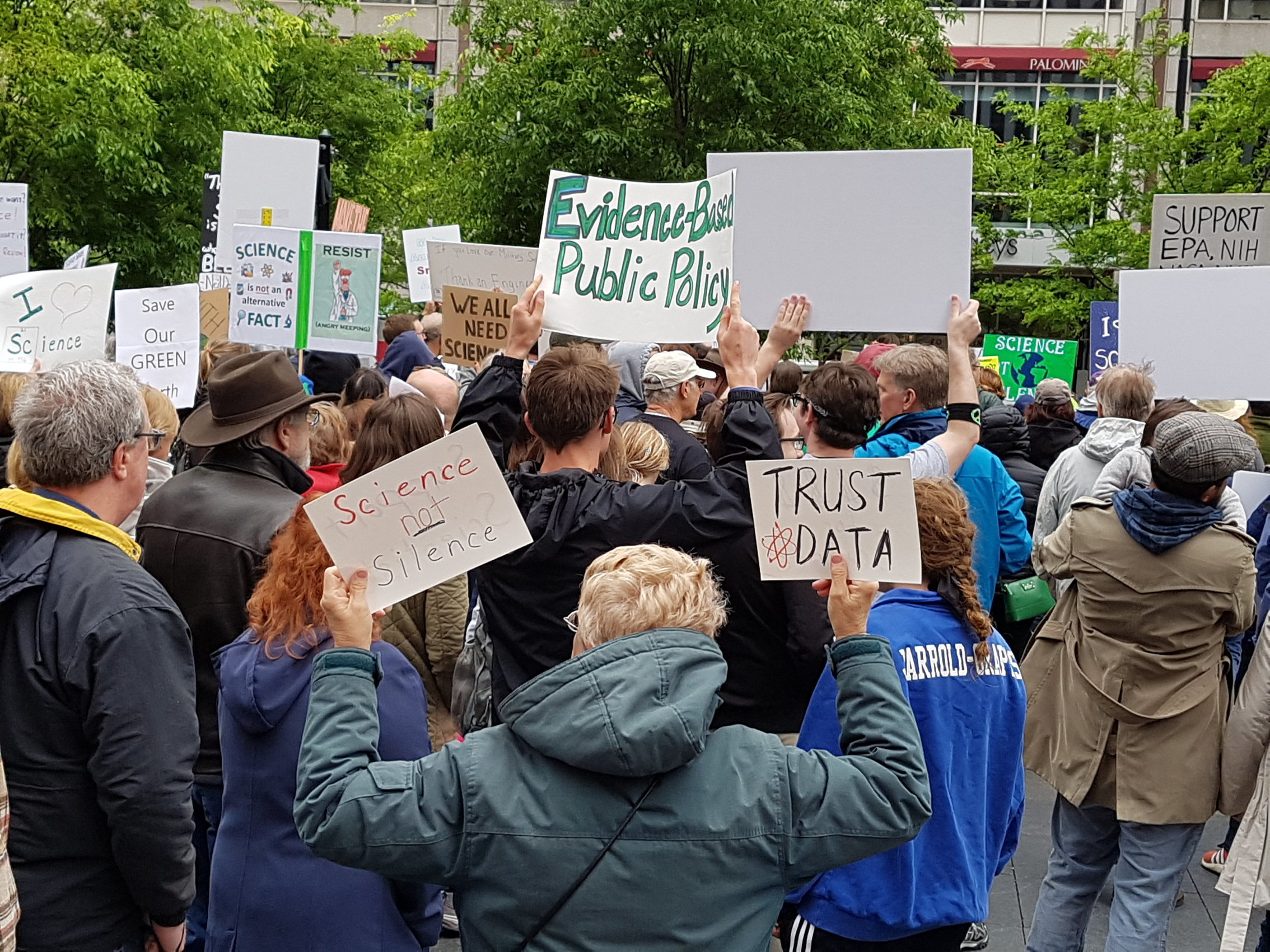
-
CELEBRATE. Scientists and supporters of the cause celebrate Earth Day by speaking out. “Science, simply observation, data collection, analysis, is a process intrinsic to human intellect. Its influence has informed all aspects of medicine, our lives, the way we live in our homes, our health, our education. Data are everywhere, and we can only ignore scientific data regarding all these aspects of our life at our peril. Science offers our ability to adapt to the complexities faced by all of us, who share our lives, on our planet, and the lives of all of our descendants in the future,” Whitsett said. Photo courtesy of Adhiti Chundur.
